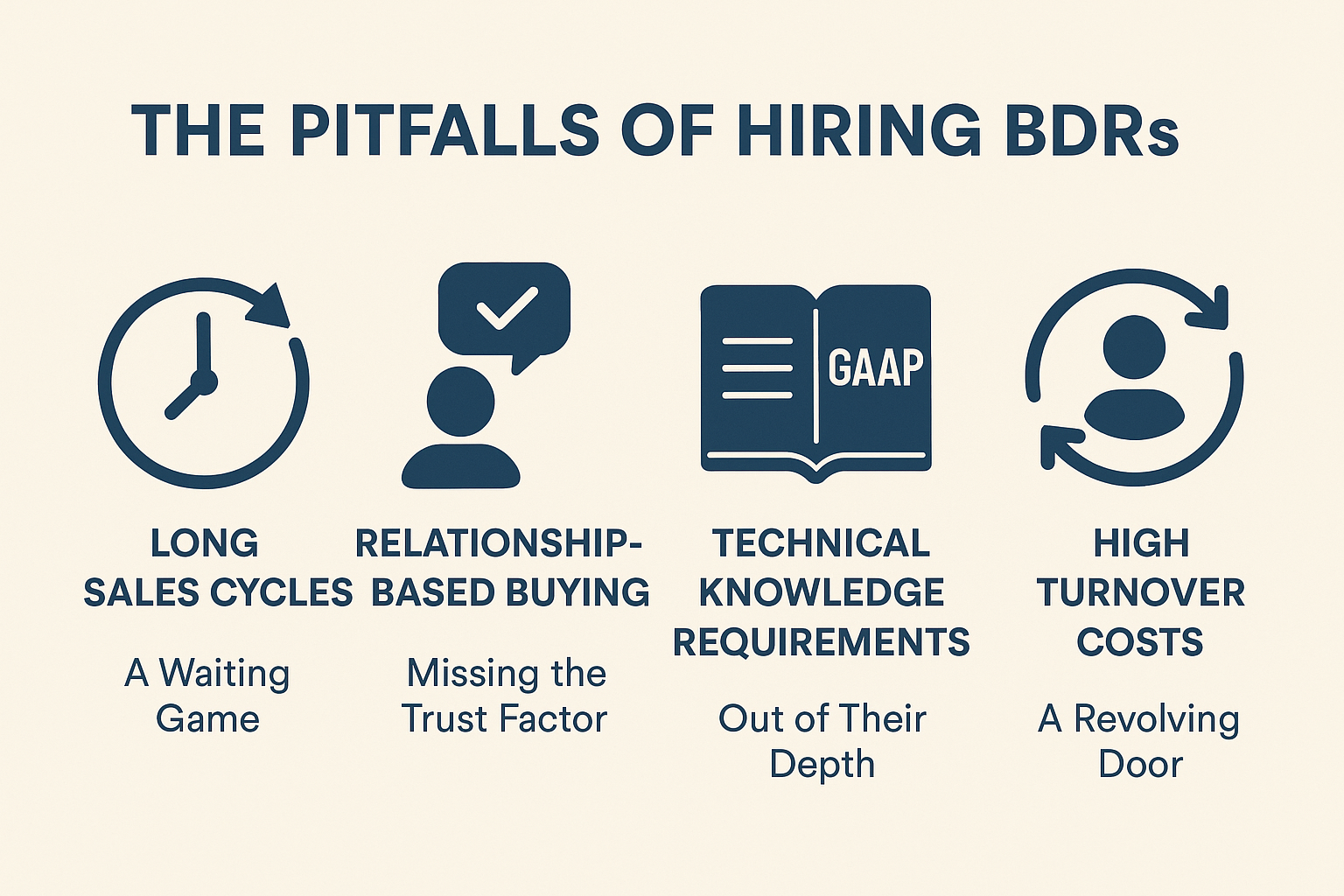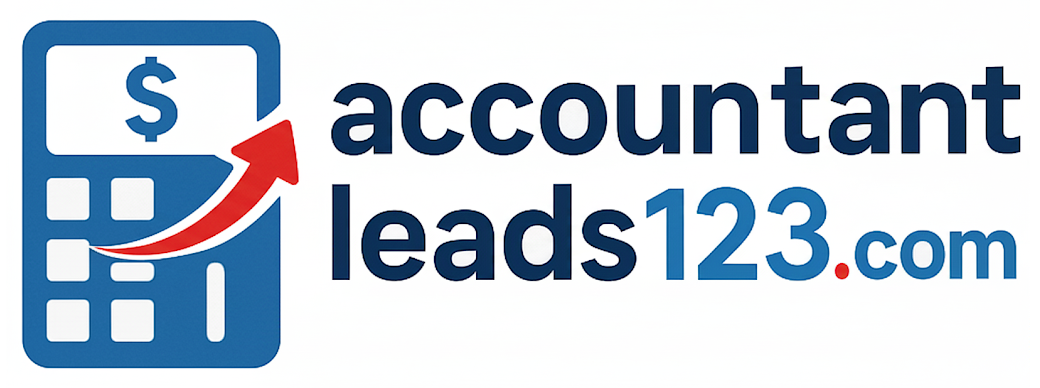The BDR Trap: Why Hiring Salespeople Rarely Works for Accounting Firms
Hey there, considering a business development rep (BDR) to kickstart your accounting firm’s growth? It might look like a good move on paper, but in the real world of professional services, it often turns into a frustrating misstep. Accounting isn’t like selling widgets, it’s about trust, expertise, and long-term relationships. Today, let’s dive into why BDRs struggle to deliver and why signals-based marketing might just be the game-changer your firm needs.
The Pitfalls of Hiring BDRs
Long Sales Cycles: A Waiting Game
Accounting services aren’t a snap decision for clients. Picture a small business owner weighing a major tax strategy, it could take months to commit. BDRs, trained for quick sales, find this pace brutal. With a 3-6 month training period and an annual investment of $80,000-100,000, you’re looking at a slow burn before seeing results, and even then, the best outcome is a modest 8-12 appointments per month. That delay can stall your growth plans when you need momentum most.
Relationship-Based Buying: Missing the Trust Factor
In accounting, clients don’t just buy services, they invest in a relationship. They want someone who knows their books inside out, not a salesperson reading a script. BDRs, often generalists, lack the industry depth to build that trust. For instance, a client hesitant about a new compliance rule might need a seasoned accountant, not a BDR fumbling through a pitch, leaving your firm leaning on sporadic referrals instead of a steady pipeline.
Technical Knowledge Requirements: Out of Their Depth
Accounting isn’t just numbers, it’s navigating complex regulations like IRS codes or GAAP standards. BDRs, without that background, can’t dive into topics like merger implications or tax optimization. Imagine a prospect asking about SOX compliance, a BDR might miss the mark, failing to qualify leads effectively. This gap leaves your firm missing out on high-value opportunities that require real expertise.
High Turnover Costs: A Revolving Door
Turnover is the silent killer of BDR strategies. When a rep leaves after six months, you’re back to training, sinking another $80,000-100,000 into the process. Over five years, with turnover risks factored in, costs can skyrocket past $500,000 when lost productivity is included. For example, a firm losing two BDRs in a row might spend over a year restarting, all while competitors gain ground.
Why Signals-Based Marketing Outshines the Rest
Now, let’s flip the script to signals-based marketing, a strategy that turns the tables on traditional lead gen. This approach uses cold email marketing to target companies showing clear buying intent, like hiring a CFO or prepping for an IPO, right when they need your services. The data backs it up: it delivers qualified appointments at $250-400 per appointment in Year 1, dropping to $65-100 in Years 2-5 after ownership transfer, a 60-75% cost reduction compared to the $600-1,300 of traditional methods.
The magic happens with its precision. Instead of casting a wide net, it focuses on signals like headcount growth or new tax obligations, reaching only the 2-4% of the market actively seeking help, compared to the 0.5-1% response rate of generic emails. With a 90-day implementation, you’re looking at 8-12 qualified appointments monthly, a 20-30% close rate, and an average client value of $15,000+ annually. The ROI? A solid 400-800% in Year 1, turning infinite after you own the system by Week 12. Plus, you’re not renting leads, you own the infrastructure, domains, and processes, dropping costs dramatically while competitors stick to pricey ads or unstable reps.
Conclusion
Hiring BDRs can drag your accounting firm down with long sales cycles, trust gaps, technical shortcomings, and turnover headaches, costing you time and money without reliable results. Signals-based marketing, on the other hand, offers a smarter path with lower costs, targeted outreach, and ownership of a scalable system. It’s designed for the modern accounting landscape, delivering predictable growth where BDRs fall short, making it a clear choice for firms ready to thrive.

